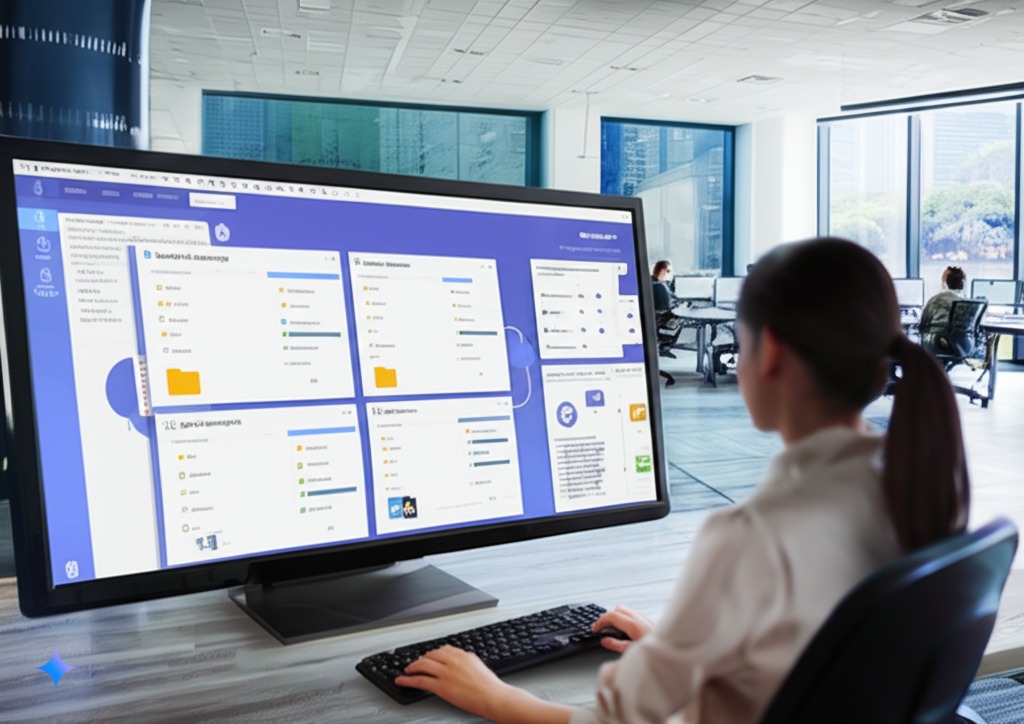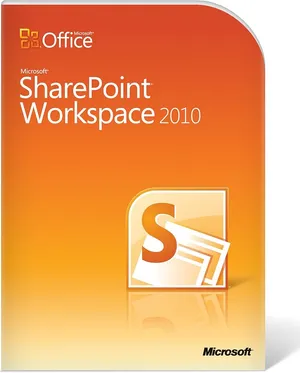Microsoft SharePoint Workspace

What is Microsoft SharePoint Workspace?
Microsoft SharePoint Workspace was a collaboration tool developed by Microsoft that allowed users to sync SharePoint libraries and lists directly to their computers for offline access. Originally known as Microsoft Office Groove, it was designed to enhance collaborative work and document management in business environments.

Launched as part of Microsoft Office 2010, SharePoint Workspace helped thousands of organizations stay productive even when internet connectivity was unavailable by enabling offline editing and automatic syncing when back online.
While Microsoft SharePoint Workspace is no longer supported, its legacy lives on through more modern tools like OneDrive for Business, Microsoft Teams, and SharePoint Online—all integrated within the Microsoft 365 Workplace ecosystem.
Differences Between SharePoint Workspace and SharePoint Online
Though they share the “SharePoint” name, they serve different purposes:
| Feature | SharePoint Workspace | SharePoint Online |
|---|---|---|
| Usage Type | Local sync of SharePoint sites | Cloud-based platform |
| Offline Access | Yes | Limited via OneDrive |
| Office Integration | Office 2010 | Microsoft 365 |
| Current Status | Discontinued | Active & updated |
| Modern Functionality | Limited | Fully integrated with Teams, Power Automate, etc. |
While SharePoint Workspace prioritized offline access, SharePoint Online focuses on real-time cloud collaboration, mobility, and advanced automation.
Key Features of Microsoft SharePoint Workspace
- Offline Syncing: Ideal for mobile or low-connectivity work environments.
- Intuitive Interface: Folder-based structure, Windows Explorer integration.
- Distributed Collaboration: Real-time teamwork when online.
- Automatic Sync: Local changes sync with SharePoint server.
- Enterprise Security: Role-based access and encrypted data.
Benefits of Using SharePoint Workspace in Business Environments
The tool was designed to solve enterprise-specific challenges.
Optimizing Digital Workflow
The main advantage was ensuring workflow continuity during connectivity issues, greatly improving team efficiency.
Security and Access Control
It supported granular permissions per user and protected data through authentication and encryption methods.
Microsoft Workplace vs. Microsoft 365 Workplace: Which Should You Choose?
These terms are often used interchangeably but aren’t identical. “Microsoft Workplace” is a broad term, while “Microsoft 365 Workplace” refers to a unified environment including:
- Outlook
- Microsoft Teams
- OneDrive
- SharePoint Online
- Planner
- Word, Excel, PowerPoint (online)
Benefits of Microsoft 365 Workplace
- Real-time collaboration
- Cloud-based security
- Automation via Power Automate
- Scalable for any team size
What Office 365 Workplace Offers in Collaborative Environments
Office 365 Workplace, now integrated into Microsoft 365, enables document sharing, task coordination, and remote connectivity—making it a natural evolution of the share point workspace model.
How to Integrate Microsoft SharePoint Workspace into Your Organization
Although it’s no longer updated, some organizations still run legacy installations.
Technical Requirements and Licensing
- Office 2010 Professional Plus or Microsoft Office Groove
- Windows 7 or compatible OS
- Access to SharePoint Servers
Best Practices for Implementing SharePoint Workspace
- Set up sync and backup policies
- Train teams on offline-to-online workflows
- Use complementary tools like OneDrive for better sync
Use Cases of SharePoint Workspace in Different Industries
In Educational Environments
- Teachers and students could collaborate on assignments
- Share documents without internet access
In Large Corporations
- Large-scale document management
- Version control for auditing and compliance
The Evolution Toward the Digital Workspace
A Digital Workspace is a unified environment where users access apps, documents, and communication tools from anywhere.
What Is a Digital Workspace and How SharePoint Fits In
SharePoint Online and Microsoft Teams act as pillars in this ecosystem, offering centralized, accessible, and secure operations.
Future Trends in the Digital Workplace with Microsoft Tools
- AI-driven automation and recommendations
- Deep integration with Microsoft Power Platform
- Personalized user experiences
Integration with Microsoft Teams and Power Platform
Together, Teams, Power BI, Power Apps, and SharePoint enable customized workflows, smart analytics, and instant collaboration.
Common Issues and How to Fix Them in SharePoint Workspace
- Sync Conflicts: Resolve by reviewing versions or updating manually.
- Permission Errors: Check SharePoint configuration.
- Server Connection Failures: Review network or credentials.
Diagnostic Tools and Support
Microsoft offered tools like the Workspace Repair Tool to resolve frequent errors.
Quick Comparison: Share Point Workspace vs. Alternatives
| Tool | Offline | Cloud | Integration | Ease of Use |
|---|---|---|---|---|
| SharePoint Workspace | Yes | Limited | High (with Office 2010) | Medium |
| Google Workspace | No | Yes | High | High |
| Dropbox Business | Partial | Yes | Medium | High |
| Zoho WorkDrive | No | Yes | High | High |
Frequently Asked Questions About Microsoft SharePoint Workspace
1. Is Microsoft SharePoint Workspace still available?
No. It has been discontinued and replaced by more modern tools like SharePoint Online.
2. What is the best alternative to SharePoint Workspace?
OneDrive for Business and Microsoft Teams are natural successors.
3. Can I still use it if I have it installed?
Yes, but you won’t receive support or security updates.
4. Do I need internet to use it?
No. You can work offline and sync later.
5. Is it compatible with modern Windows versions?
It may have issues with Windows 10 or 11.
6. What’s the difference between Microsoft 365 Workplace and Office 365 Workplace?
Office 365 Workplace is the older branding for what is now Microsoft 365 Workplace.
Conclusion: Is Microsoft SharePoint Workspace Worth It in 2025?
While Microsoft SharePoint Workspace is no longer actively supported, it was a pioneer in collaborative offline work. Its legacy continues through more robust, secure, and integrated tools like SharePoint Online, Microsoft Teams, and the Microsoft 365 Workplace.
For modern businesses, transitioning to a complete Digital Workspace powered by Microsoft is highly recommended—offering automation, mobility, and cloud-powered collaboration.